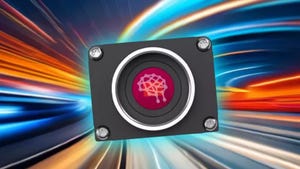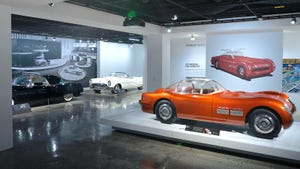February 5, 2010

Maybe some costs have to be cut, but not in the design engineeringdepartment.
That's the view of Ben Harrison, CEO of a custom injection molder inManitowoc, WI called Kaysun Corp. "We've had costcutting, but we've really stayed true to our design engineering head countbecause that area is so critical to our business and our ability to attract newcustomers."
The last few years have been a blood bath in the American injectionmolding community because of business cutbacks and the rise of less-expensivecompetitors in Asia. A few invested in designengineering and are surviving, and even growing.
Phillips Plastics in Hudson, WIis a stand-out example. The company moved away from price-based markets manyyears ago to become a one-stop shop from design through distribution, offeringmanufacturing services that range from tight-tolerance injection molding tometal and ceramic molding. A major focus is component development and assemblyfor the medical industry.
On the other side of Wisconsin,Kaysun is confirming that type of approach with a complement of four designengineers. "We're growing in areas that require far more than injectionmolding," says Harrison. "We launched lastweek with a company that asked us to design and manufacture a ruggedpersonalized digital assistant for soldiers in the military. We're gettingasked quite a bit could you not only manufacture but also do all of the upfrontprogram management that carries the whole design responsibility."
One example of the company's work is the Rockwell Collins DefenseAdvanced Global Positioning System Receivers (DAGR).
"A DAGR with a current crypto key provides the warfighter with themost robust, secure and precise navigation capabilities within the volatile andever-changing theater of operations," says Col. Dorothy Taneyhill, Armyproject manager for the Navigation Systems group at Rockwell Collins.
The receiver provides precise timing to synchronize tactical radios,missile platforms and other situational awareness navigation systems andincludes a graphical user interface. The DAGR design incorporates anti-jamimprovements and is the first U.S.handheld GPS receiver program to receive the next-generation security device,the Selective Availability Anti-Spoofing Module.
PC Plus Polyester
Kaysun designed and built tools and automation stations. The lens ismade from polycarbonate, hard coated, overmolded with a polyester blend (Xenoy)and then shielded. More than 300,000 have been shipped.
The next generation product is a smaller version called MicroDAGR thatcan be worn on the wrist just like the devices used by Dick Tracy in the comicstrips. It also includes an MP3 player and a digital camera.
Another interesting technical challenge at Kaysun is replacement ofbrass fixtures with injection molding plastic as a way to comply with California Assembly Bill 1953, which puts tightlimits on lead exposure. Lead free is defined in the bill as any pipe, plumbingfitting or fixture having a weighted average lead content of the wetted surfacearea of not more than 0.25 percent.
Several plumbing companies are, or already have, re-engineered theirplumbing lines to comply with the law.
The material selected by Kaysun's engineers to replace brass is polyphenylenesulfide, a polymer that has excellent dimensional stability and virtually nowater absorption. They are unaffected by many organic and mineral-basedchemicals, even at high temperature over a prolonged period of time. The toughpart is that PPS has a melting point of 700F.
Another challenge was designing a tool and a process to unthread thesteel to produce the valve body. 
Emphasis on Design Engineering Pays off for Injection Molder A
About the Author(s)
You May Also Like





